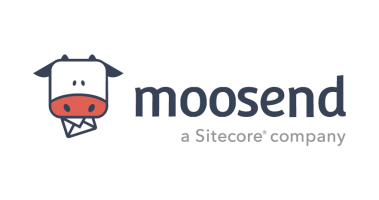
If every prediction about AI’s transformative power and the speed with which it will be applied to every aspect of society and business is over-egged by half, it is still exploding every paradigm it touches at an impressive speed.
How we research and the results we get from search engines are unrecognisable from a year ago. AI Mode on Google, Perplexity, LLM recommendations – the knowledge economy is shapeshifting before our eyes. AI is embedded everywhere, built into devices and website refreshes as standard.
With ChatGPT barely four years old and iterating endlessly, businesses are harnessing its processing and predictive power in clever, productive and infinitely creative ways. In our daily lives, AI agents are picking up the tasks few of us relish – automating research, carrying out comparisons, compiling shortlists and selecting products, services and brands based on limitless criteria.
So how is this going to change the way businesses market themselves? And what steps can businesses take to prepare for this new world?
Agent-to-agent goes mainstream
Two-thirds of AI experts we surveyed recently predicted that lower-funnel marketing will become fully agent-to-agent by 2030. Personal agents, mostly on our mobile phones, will trawl the internet and shortlist products and services based on parameters such as price, availability and features.
The boring bit of finding the perfect vacuum will be done by your agent. And it’ll get you the best price too – some agents are already set up to haggle for you.
It’s a world that appears to throw brand marketing into doubt. Surely, the way to win is to optimise everything towards agentic crawlers, informative content, positive reviews, precise product information, real-time availability and, crucially, the biggest discounts.
This might sound like a race to the bottom, but it’s not. Even in the AI-led future, brand affinity will beat agentic rankings every time.
Bet bigger on brand
Success in this fast-approaching reality requires a two-pronged approach. First, dynamically optimise content for agents through product reviews, descriptions and deals. But secondly, keep real, human customers in focus, and begin to move more money into brand activity.
Achieving the former is technical and requires its own piece. But the latter is about giving people a reason to consider a brand beyond their agent’s suggestions – perhaps even to instruct it to include the brand going forward, even if it doesn’t rank highly against other criteria. Brand is what drives shoppers to purchase a more expensive item, to stay loyal to a product they love even when a competitor is getting rave reviews. In an agent-to-agent world, it will be the one thing that will encourage people to override the agent’s objective rankings – all simply because of how they perceive the brand.
The key to helping people do this manual over-ride is, over time, to effectively and persistently differentiate your brand from the competition. In marketing terms, differentiation means distinctiveness (think the Nike swoosh), dynamism (a brand’s ability to adapt to changing consumer needs), uniqueness (one-of-a-kind attributes that chime with people), innovation (a brand’s association with pioneering solutions to people’s problems) and a point of difference (how a brand sets itself apart from the competition).
Tools exist that can help pinpoint brands’ strengths and weaknesses in these areas and inform marketing content, in-store presence, and even packaging to differentiate most effectively. Businesses need to understand these markers and know which partnerships and innovations reinforce differentiation most quickly. They can then empower creatives to come up with ideas that bring these qualities to life in advertising in the most compelling and memorable way.
Brands that are strongly differentiated in people’s minds carry one huge advantage over their competitors aside from helping people prefer them as brands: they are insulated from price being the deciding factor in the purchase decision. While price is always a consideration, brands that are differentiated strongly in people’s minds don’t have to be the cheapest to get the sale.
AI can help power this, pinpointing what drives distinction and success and allowing creatives to get to the nub of a brilliant campaign quicker. For those that understand how AI can enhance a brand, rather than just flatten the market, it’s a future of outstanding originality.
People still decide
Ultimately, it’s about connecting with consumers. Research we carried out with Oxford University revealed that 84% of people have decided which brands they are going to shortlist already before they buy. Exploring how people make decisions about the brands they buy, it showed that the best way to make an impact was to prime shoppers to prefer a brand through activity that highlights differentiation.
So, whether you believe agent-to-agent marketing is hokum or too far away to worry about just yet, it is coming. But at the same time, no amount of transformation will change the fact that our consumers are people.
Moving marketing money into brand isn’t just good, creative marketing – it’s futureproofing.
Jem Lloyd-Williams is chief strategy officer at WPP Media

If every prediction about AI’s transformative power and the speed with which it will be applied to every aspect of society and business is over-egged by half, it is still exploding every paradigm it touches at an impressive speed.
How we research and the results we get from search engines are unrecognisable from a year ago. AI Mode on Google, Perplexity, LLM recommendations – the knowledge economy is shapeshifting before our eyes. AI is embedded everywhere, built into devices and website refreshes as standard.
With ChatGPT barely four years old and iterating endlessly, businesses are harnessing its processing and predictive power in clever, productive and infinitely creative ways. In our daily lives, AI agents are picking up the tasks few of us relish – automating research, carrying out comparisons, compiling shortlists and selecting products, services and brands based on limitless criteria.





